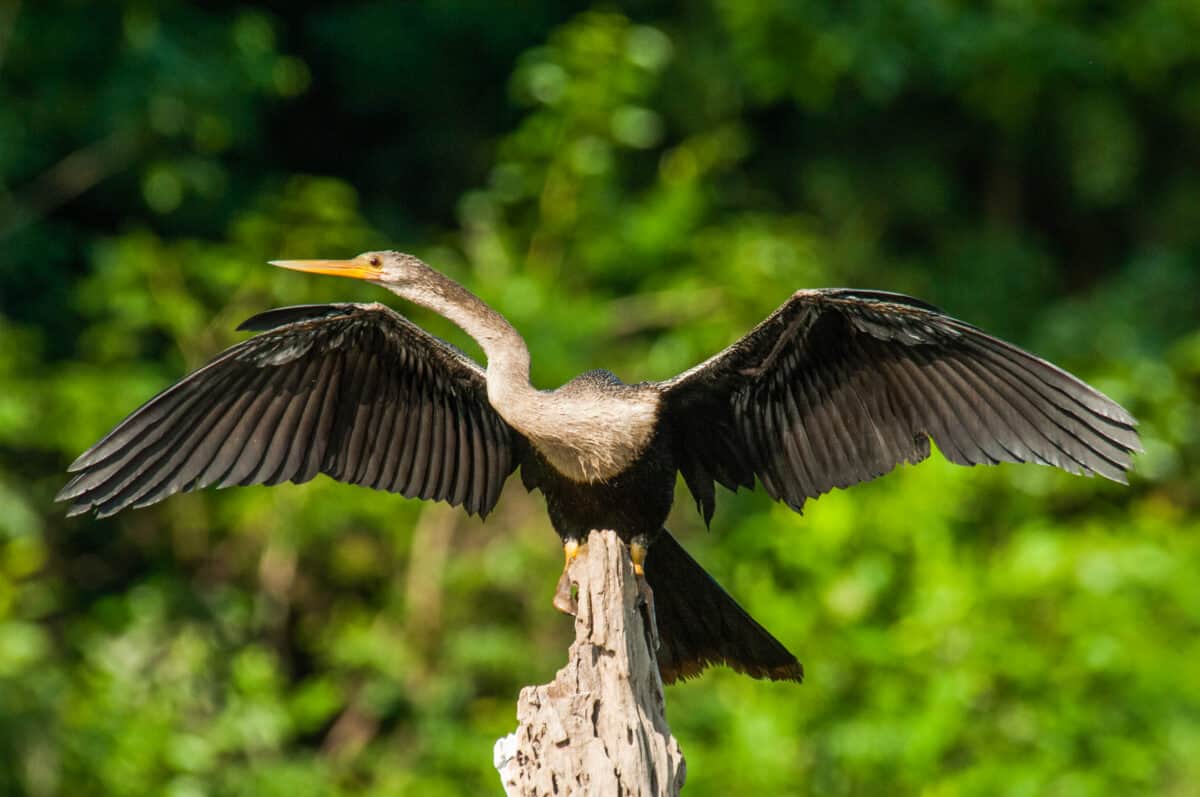The Everglades, a natural treasure trove of biodiversity, beckons nature enthusiasts with its sprawling wetlands and lush ecosystems that span over 1.5 million acres in southern Florida. This unique habitat serves as a sanctuary for an array of fascinating wildlife, from the stealthy American alligator to the gentle manatee, each playing a vital role in maintaining the region’s ecological balance. Join us as we explore the top ten animals that make the Everglades a remarkable wilderness area.
American Alligator The Icon of the Everglades

No visit to the Everglades is complete without encountering the iconic American alligator. These prehistoric reptiles have thrived in the wetlands for millions of years, showcasing remarkable adaptability. Typically found in freshwater marshes and swamps, alligators are apex predators, playing a vital role in controlling prey populations and maintaining the balance of their ecosystems. Visitors often spot them basking on sunny banks or slowly cruising through the water, their eyes just above the surface.
Florida Panther The Elusive Big Cat

One of the rarest residents of the Everglades is the elusive Florida panther. With only about 120 to 230 individuals remaining, these majestic creatures are critically endangered. Panthers are primarily found in the southwestern regions of the Everglades, where they hunt deer, hogs, and smaller mammals. Conservation efforts are crucial for their survival, as habitat loss and human interactions pose significant threats.
Manatee The Gentle Giants of the Waterways

These gentle giants, also known as “sea cows,” are frequently seen gliding through the warm waters of the Everglades. Manatees are herbivorous marine mammals that feed on aquatic plants. They are especially prevalent in the rivers and coastal waters during the cooler months. Due to their slow-moving nature, manatees face threats from boat collisions, making conservation efforts vital for their protection.
Roseate Spoonbill The Pink Beauties

The vivid pink plumage of the roseate spoonbill is a stunning sight against the green and brown backdrop of the Everglades. These wading birds are commonly found in mangroves and shallow waters, where they use their spoon-shaped bills to forage for small creatures. Watching a flock of spoonbills take flight is a breathtaking spectacle that highlights the area’s rich avian diversity.
Eastern Indigo Snake The Nonvenomous Hunter

The Eastern indigo snake is an impressive, nonvenomous reptile that thrives in the varied terrains of the Everglades. Recognizable by its lustrous, blue-black hue, this snake is one of the longest native snake species in North America. It preys on a wide array of animals including rodents, frogs, and even other snakes. The species is considered threatened, primarily due to habitat destruction.
Great Egret The Majestic Fisher

With its elegant white feathers and graceful stature, the great egret is a common yet awe-inspiring sight in the Everglades. These birds are expert fishers, patiently stalking their prey in shallow waters before striking with precision. The great egret’s large nesting colonies can be found dispersed throughout the Everglades, offering birdwatchers a perfect opportunity for observation.
Wood Stork The Endangered Aviator

The wood stork, a large, wading bird with distinct black-and-white plumage, is an endangered species that finds refuge in the Everglades. These birds are crucial for the wetland’s food chain, as they primarily feed on fish and small amphibians. Conservation efforts focus on maintaining water levels and preserving their natural habitats to ensure the species’ survival.
West Indian Flamingo The Uncommon Visitor

The West Indian flamingo is a rare but spectacular visitor to the Everglades. Known for their bright pink coloring and graceful movements, they occasionally grace the Everglades with their presence during migration. Flamingos add a burst of color to the landscape, often visiting shallow waters where they feed on brine shrimp and algae, which contribute to their vivid hue.
Black Bear The Opportunistic Forager

The black bear is one of the largest mammals inhabiting the Everglades. These adaptable creatures have varied diets ranging from fruits and berries to small mammals and carrion. While primarily nocturnal, black bear sightings are not uncommon, particularly in the less populated parts of the Everglades. Conservation efforts focus on reducing human-bear conflicts and protecting their habitats from encroachment.
Anhinga The Snakebird of the Swamp

The anhinga, also known as the snakebird, is a unique aquatic bird of the Everglades. Recognized by their long, snake-like necks, anhingas are adept underwater hunters. After fishing, they can often be seen perched with wings spread wide, drying their feathers in the sun. Watching their skilled maneuvers offers an intriguing glimpse into the diverse avian life of the Everglades.
Conclusion: Preserving the Rich Biodiversity of the Everglades

The Everglades is an extraordinary ecosystem teeming with diverse wildlife. Each species contributes uniquely to the ecological tapestry, from the top predators to the smallest wading birds. Conservation efforts are crucial not only for preserving these remarkable creatures but also for maintaining the health of this vibrant ecosystem. As stewards of nature, understanding and protecting these natural wonders ensure their survival for generations to come.
- The Secretary Bird A Raptor That Hunts on Foot - August 9, 2025
- 10 Dog Breed Restrictions That Stir Controversy in U.S. States - August 9, 2025
- 13 Animals That Outsmart Their Predators - August 9, 2025

